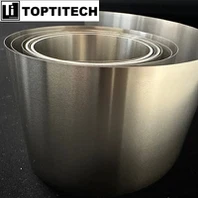TopTiTech produced the titanium electrode plate have different features, for example
●Water rich in dissolved hydrogen;
●Energy active water;
●Small molecule water;
●High solubility water;
●High permeability water;
Coating a layer of conductive corrosion-resistant coating on the titanium surface can effectively avoid
the formation of oxide film on the surface of the titanium bipolar plate and meet the performance
requirements of the electrode plate. In addition to corrosion resistance and excellent electrical
conductivity, the coating also needs to have good bonding strength with the substrate. At the same
time, since the temperature of the PEMFC will change between room temperature and 80 °C, the
coating and the substrate material need to have similar thermal expansion coefficients. In order to
avoid delamination and cracking of the coating during the temperature change process, the protection
of the material will be lost.
Commonly used coatings are mainly divided into 2 categories, namely metal-based coatings (precious
metals, metal carbon/nitride) and carbon-based coatings (graphite, conductive polymers, amorphous
carbon, etc.).
As an important part of hydrogen fuel cells, bipolar plates play a decisive role in cell performance, cost
and durability. The two important issues currently restricting the commercialization of hydrogen fuel
cells are cost and durability, and the cost of bipolar plates is determined to a certain extent by the
electrode material, flow field processing and electrode coating preparation process.

Graphite and carbon-based composite materials can no longer meet the requirements of hydrogen
fuel cells in terms of performance, and metal materials have now become the mainstream materials for
hydrogen fuel cell bipolar plates. In addition, high power has always been the pursuit of hydrogen fuel
cells. Titanium and titanium alloys in metal materials have low density and high specific strength, and
have excellent corrosion resistance in hydrogen fuel cells, which can significantly reduce the weight
and volume of bipolar plates. The mass specific power and volume specific power of the battery are
significantly improved, and the corrosion products generated by titanium and titanium alloys during
long-term service operation are less toxic to proton exchange modes and catalysts, which is conducive
to improving the stability and durability of battery operation.

The metal carbon/nitride and amorphous carbon coatings prepared on the surface of titanium bipolar
plates have excellent comprehensive properties and have high research and application value.
However, these coatings are prone to pinhole defects, so the main goal of current research is to
improve Coating compactness, film-base bond strength and coating surface conductivity. In addition,
the coating should have good hydrophobicity to facilitate the discharge of the water produced by the
reaction.
To meet these comprehensive properties, higher requirements are placed on the structural design and
organizational composition of the coating. The composite and nano-structure of the coating structure
can improve the compactness, corrosion resistance and electrical conductivity of the coating to a
certain extent, and enhance the service stability and reliability of the titanium plate, which is the main
direction of future development.




